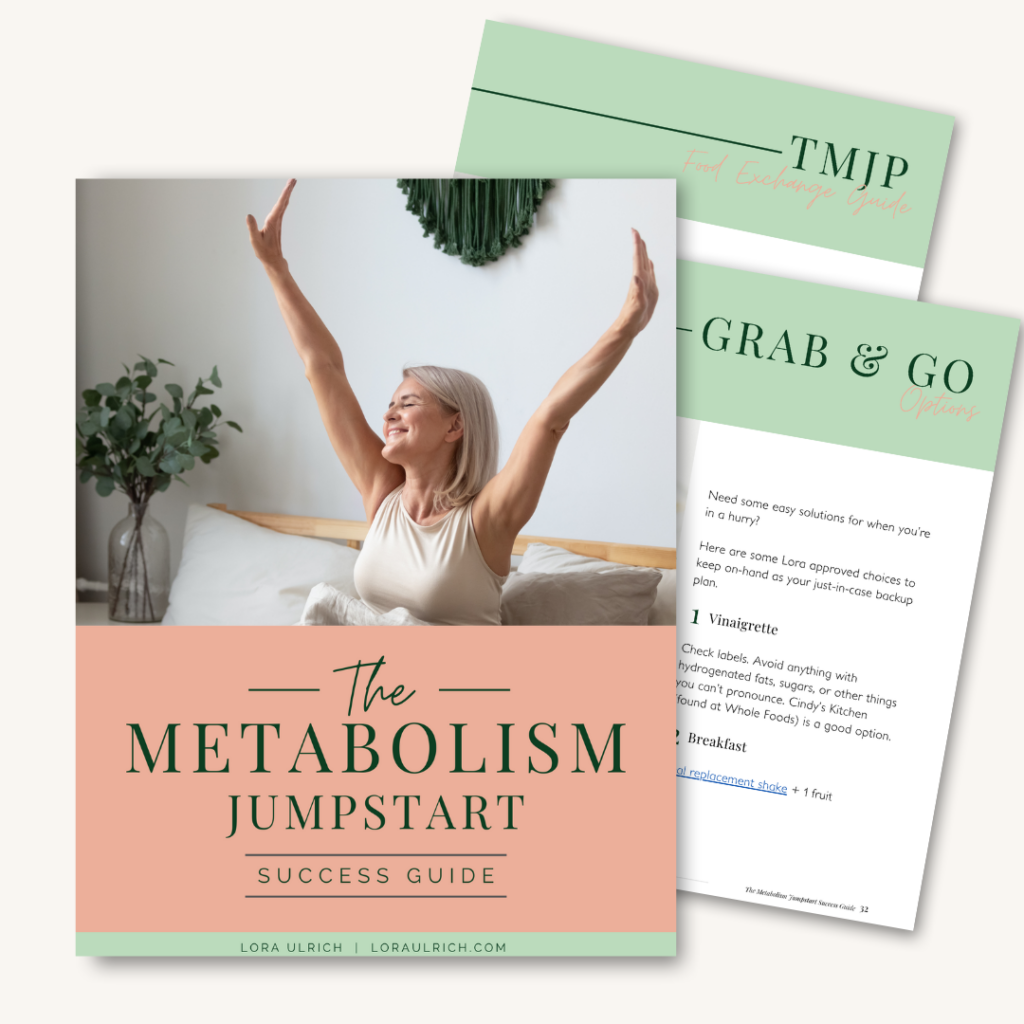Let’s be real: midlife metabolism is not the same beast it used to be.
Even when you’re eating “clean,” walking daily, and cutting calories, the scale barely budges, or worse, creeps up. If you’ve been feeling frustrated or stuck lately, you’re not alone… and it’s not your fault.
The truth? Your body has changed and your strategy needs to change with it.
Before you add another thing to your to-do list, I want you to pause. Because what you let go of might matter more than what you add in.
Here are 6 metabolism-sabotaging habits that could be slowing your results without you even realizing it:
1. Going “All In” Overnight
If you’ve ever tried to completely overhaul your habits on Monday, you already know how this story ends.
Quick-fix plans and extreme restriction can actually increase stress on your body, spiking cortisol and slowing down your metabolism. Midlife bodies are especially sensitive to these shifts and they rebel fast.
Instead: Start small. Focus on realistic upgrades to your meals, movement, and mindset. Your metabolism thrives on consistency, not extremes.
2. Obsessing Over the Scale
It’s easy to tie your success to a single number but weight is just one piece of the puzzle. And in menopause, it’s often the least helpful one.
Water retention, inflammation, muscle loss, and hormonal changes all play a role. Not seeing movement on the scale doesn’t mean your body isn’t shifting.
Instead: Track how you feel. Energy, sleep, cravings, mood, and how your clothes fit give a more accurate picture of your progress.
3. Skipping Meals or Over-Restricting
Think less food means faster fat loss? Not with a midlife metabolism.
Undereating, especially protein, can cause blood sugar swings, energy crashes, and intense cravings later. It also makes your body feel unsafe and slows fat-burning.
Instead: Prioritize steady meals with protein, fiber, and healthy fats to stabilize hormones and support metabolism.
Looking for a simple, doable place to start? The 5-Day Menopause Diet Plan gives you a structured plan to support your metabolism with real meals. No guessing, no grazing.
4. Underestimating Recovery & Sleep
When your hormones are already shifting, skipping rest is like pouring gasoline on a fire.
Sleep deprivation and chronic stress mess with insulin, increase belly fat, and block your ability to lose weight no matter how clean your diet is.
Instead: Make sleep, rest days, and stress relief non-negotiable. Recovery is metabolism work.
Source: National Institutes of Health
5. Following Generic Plans
Your best friend’s intermittent fasting plan. That 20-something influencer’s detox. Your old calorie-counting app.
They’re not built for a body navigating perimenopause, menopause, or postmenopause, and they won’t work for you the way they used to.
Instead: You need a metabolism-first, hormone-friendly approach that’s built for women in midlife.
That’s exactly what we cover in the Metabolism Jumpstart, my 4-week program designed to reset your metabolism and help your body feel safe enough to release fat again.
6. Trying to “Go It Alone”
This season of life can feel isolating, especially when it seems like no one else is talking about it.
But support matters. Not just for accountability, but for mindset, strategy, and confidence. Because figuring it out on your own? That takes a whole lot longer.
Instead: Get in community with women walking the same road with expert guidance designed for your body and this stage of life.
Our next round of the Metabolism Jumpstart Group opens soon. Join the waitlist now to be the first to know.
Your Next Best Step: Explore the Group and Self-Guided Metabolism Jumpstart Below
You don’t need more willpower. You need a strategy that matches your body.
If you’re tired of working hard and getting nowhere, the Metabolism Jumpstart is where I’d start. Inside this 4-week self-guided or group program, you’ll learn how to:
- Eat in a way that supports your hormones
- Rebuild your metabolism from the inside out
- Feel good in your body again, without extremes.
Join The Waitlist for the Group Program
Start Your Metabolism Jumpstart: Self-Guided
FAQs about 6 Ways You’re Making it Harder to Reach Your Goals
1. Start small and realistic
2. Focus on how you want to feel
3. Set metabolism-supportive routines
4. Plan for recovery and rest
5. Choose strategies that fit your life stage
6. Build in accountability and support
Trying to do too much at once, obsessing over weight, undereating, neglecting sleep, following cookie-cutter plans, and going it alone.
1. Create realistic expectations
2. Fuel your metabolism with steady meals
3. Prioritize sleep and recovery
4. Let go of the scales as the only success marker
5. Use hormone-friendly strategies
6. Focus on consistency over perfection
7. Get expert support and community
1. Define your real goal (beyond weight)
2. Identify habits that support your metabolism
3. Eliminate what’s not working
4. Map small daily steps
5. Schedule recovery like a workout
6. Choose guidance (coach/program) to stay on track

+ show Comments
- Hide Comments
add a comment